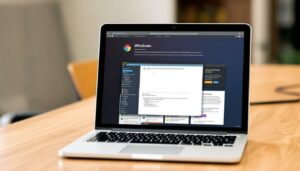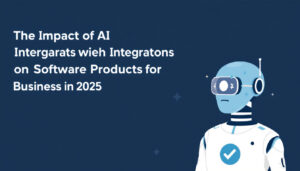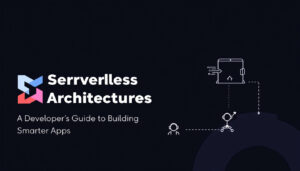Cross-platform compatibility is now a baseline expectation for digital products. As software ecosystems and hardware options multiply, the need for reliable, consistent user experiences across devices and operating systems grows more urgent. In 2025, developers, IT experts, and business leaders face new challenges from shifting user behavior, rapid advancements in device technology, and policy changes affecting interoperability.
Meeting these demands means focusing on portability, adaptive interfaces, and robust security across all environments. Recent trends—such as increased remote work, the spread of Internet of Things devices, and higher user expectations for integrated systems—make compatibility a top priority. Understanding these shifts is critical for professionals who want their products to remain competitive and accessible in tomorrow’s market.
Defining Cross-Platform Compatibility in 2025
In 2025, cross-platform compatibility refers to the ability of digital products to operate consistently across a diverse range of devices and operating systems. This characteristic allows applications and services to maintain uniform functionality, usability, and security standards regardless of the platform. The definition goes beyond simple responsiveness or device support—it demands stability as new devices, form factors, and operating environments emerge each year.
The Evolution of User Expectations
Modern users engage with digital products across an array of interconnected devices. The expectation of frictionless transitions between work, social, and entertainment experiences has increased. A user who starts reading an email on a smartphone wants to finish it on a smartwatch, laptop, or even via a smart display. Interruptions or inconsistencies weaken trust and push individuals to seek alternatives.
- Integration is now assumed: Siloed or isolated tools have lost favor, with most users rejecting products that cannot share data or synchronize activities across platforms.
- Reliability across use cases: Whether accessing mission-critical business tools or daily consumer apps, users want the interface and core features to appear uniform.
- Device agnosticism: The choice of device or operating system should not dictate available functionality.
The rise of remote work, coupled with on-demand entertainment and smart utilities, serves as a clear example. Today’s consumer expects the same quality of experience using cloud-based office suites or streaming platforms, regardless of whether the interaction occurs on Windows, iPadOS, Android, or a home assistant speaker. According to the history detailed in the Wikipedia entry on cross-platform software, what began as support for two or three platforms has evolved: users now expect compatibility that spans not just desktop and mobile, but also wearables and embedded devices.
The Current Technology Landscape

Photo by Tima Miroshnichenko
By 2025, the digital environment has moved far beyond the dichotomy of desktop versus mobile. Product teams must now provide:
- Support for foldable phones, tablets, and 2-in-1 laptops,
- Compatibility with multiple smartwatch and fitness tracker platforms,
- Consistency across voice assistants, smart speakers, and connected TV OS,
- Integration with thousands of IoT endpoints in business and consumer settings.
This shift has translated into a significant development workload. Operating systems have multiplied with variants from Google, Apple, Microsoft, and open-source communities. Embedded platforms are now ubiquitous, from wearable payment devices to automotive dashboards.
Industry reporting, such as the MWC 2025 review on mobile technology, highlights that foldables and flexible displays have moved into mainstream business and consumer use. Meanwhile, the forecast by IoT Analytics on the number of IoT devices notes connected endpoints are set to surpass 18 billion globally. These trends increase requirements on development, testing, and maintenance teams.
For teams adopting new solutions or preparing updates, the scope can extend to localization, accessibility, and strict compliance with security standards. Efforts to achieve robust compatibility directly affect user satisfaction and a product’s future market viability. For those building or maintaining systems, keeping pace with this expanding device ecosystem is necessary for competitive advantage, as discussed further on specialized topics like best practices for mobile app development.
Cross-platform compatibility in 2025 means creating digital experiences that follow users wherever they go and however they choose to interact—maximizing accessibility and reducing friction with every update.
Essential Features for Seamless Cross-Platform Experiences
The integration of digital products across devices brings both technical and design challenges that organizations must address to meet present-day standards. For digital products to succeed in 2025, core features must support consistency, accuracy, and trust. This section outlines the foundational aspects that deliver a unified user experience, uphold data integrity, and protect sensitive information across platforms and environments.
Consistent UI/UX Across Devices

Photo by Tima Miroshnichenko
A recognizable and predictable user interface is important for retaining user engagement. Adaptive design and responsive layouts enable interfaces to adjust gracefully to various screens, from smartphones to desktops and wearables. These techniques allow each interaction—tap, click, or swipe—to feel purposeful and clear, promoting usability without requiring users to relearn workflows when switching devices.
Best practices in digital product design maintain brand identity through:
- Consistent color palettes, fonts, and visual hierarchy, so core brand elements remain identifiable.
- Modular UI components that ensure layout predictability throughout the product suite.
- Responsive scaling and adaptive layouts, implemented with CSS frameworks or platform-native tools, to optimize usability for each screen size.
- Accessibility standards and localization, helping the product reach a global user base while remaining inclusive.
Balancing consistency and adaptation is key. A strong design system establishes rules for component reuse and interface behaviors while allowing for targeted customizations based on device capabilities. For example, navigation may shift from a side menu on desktop to a bottom tab bar on mobile, but iconography and terminology stay uniform.
Implementing a style guide, clear design tokens, and established workflow documentation is regarded as a best practice. For further guidance, many organizations reference material such as Google’s design resources to streamline these efforts.
Data Synchronization and Real-Time Updates
Seamless functionality across platforms depends on accurate and timely data synchronization. When users move between devices, their data—such as app settings, recent activity, or ongoing content edits—must update instantly. Interruptions or lags can create confusion, decrease productivity, and erode trust.
Techniques that promote robust data syncing include:
- Cloud-based storage and APIs that centralize user data, making it accessible across devices.
- Real-time protocols such as WebSockets or GraphQL subscriptions for push updates and live collaboration.
- Conflict resolution mechanisms to handle simultaneous changes from multiple sources, automatically merging or prompting the user as needed.
- Incremental updates, which reduce bandwidth usage, speed synchronization, and lower the risk of data corruption.
Designing data synchronization around eventual consistency and redundancy helps prevent loss or duplication, even during connection interruptions. Testing on various networks and devices is essential. Enterprises focusing on collaboration features, like productivity suites or messaging apps, rely on these systems to guarantee uninterrupted workflows.
Up-to-date guidelines from major cloud platforms, such as the Google Cloud documentation on real-time data syncing, cover recommended approaches and deployment patterns.
Security and Privacy Considerations
Multi-platform environments create complex privacy and security challenges. Evolving standards in GDPR, CCPA, and region-specific regulations require careful data handling, transparent privacy practices, and secure integrations. Secure authentication methods and robust data storage are non-negotiable in protecting user trust and meeting compliance goals.
Key considerations for multi-platform security:
- Strong user authentication, often via multi-factor methods or OAuth, to reduce unauthorized access.
- End-to-end encryption for all data transmitted or stored, protecting user information throughout its lifecycle.
- Device and context-aware policies, such as adaptive authentication based on geolocation or device health.
- Regular vulnerability assessments and updates to maintain alignment with evolving security norms.
Storing secrets and tokens securely on each platform—for instance, using hardware-backed secure enclaves or platform-specific credential stores—mitigates risk. Additionally, compliance with regulations must be reflected in privacy policies and opt-in flows, making user consent clear and revocable.
Companies can reference resources like the National Institute of Standards and Technology (NIST) guidelines for extensive frameworks on privacy and data security that apply to cross-platform applications.
Thoughtful integration of these elements fosters confidence among both users and stakeholders, supporting product growth in an increasingly complex device ecosystem.
Technologies and Frameworks Driving Cross-Platform Development
The pace of digital transformation has produced a diverse ecosystem of platforms, devices, and operating systems. To keep digital products relevant across these variables, teams use robust technologies and frameworks. The correct technical foundation maintains a frictionless experience for users and reduces the overhead of supporting each platform individually.
Popular Cross-Platform Frameworks

Photo by Pavel Danilyuk
The demand for cross-platform digital products has fueled the growth and refinement of modern development frameworks. Today, organizations select tools that align with project size, timeline, and performance goals.
Several frameworks now dominate the market:
- Flutter
Developed by Google, Flutter uses the Dart programming language. It offers a single codebase for iOS, Android, desktop, and web, focusing on fluid animations and native-like UX. Companies choose Flutter for its performance and expressive UI widgets. A challenge for Flutter is its relatively smaller developer ecosystem and UI customizations that sometimes lag behind native updates. - React Native
Maintained by Meta (Facebook), React Native enables development for iOS and Android using JavaScript and React. Its strength lies in rapid prototyping and broad adoption, benefitting from an extensive package ecosystem. React Native applications sometimes encounter integration overhead with device-specific APIs, which may impact complex native interactions or advanced animations. - Xamarin
Now part of Microsoft’s .NET platform, Xamarin leverages C# to build cross-platform apps for iOS, Android, and Windows. It appeals to companies with Microsoft-centric backends or those seeking code sharing with desktop tools. While Xamarin reduces code duplication, UI fidelity occasionally falls short of pure native solutions, and build sizes are larger than average. - Kotlin Multiplatform and .NET MAUI
Kotlin Multiplatform, endorsed by JetBrains and Google, allows teams to share business logic across Android and iOS while building platform-specific UIs. It shortens development time but limits sharing to non-UI components. .NET MAUI, evolved from Xamarin, extends cross-platform support within the Microsoft ecosystem and is favored for enterprise apps requiring consistent integration with Windows and Azure. - Rising Contenders
Newer players, such as Ionic and NativeScript, along with advances in web-based open standards, respond to use cases that require rapid UI composition and integration with web technologies. Teams compare these on the basis of device access, performance, and the depth of web-native tool integration.
Real-world adoption highlights the decision factors:
- Consumer finance platforms opt for Flutter or React Native to maximize reach and reduce release cycles.
- Enterprise solutions often rely on Xamarin or MAUI for integration into complex, regulated environments.
- Startups and prototyping efforts may default to Ionic or web standards to accelerate validation and iteration.
For a deeper comparison, industry resources offer regular reviews. The comprehensive overview from JetBrains outlines the six most popular frameworks and emerging trends: Popular cross-platform app development frameworks.
Cloud Integration and API-Centric Architecture
Cloud services and API-driven models are now fundamental for developing products that perform reliably across platforms. Modern cloud platforms abstract infrastructure concerns, so products can synchronize data, manage identities, and scale on demand.
Key technical practices include:
- Centralized Data Storage: User data, settings, and media sync seamlessly through cloud backends—Google Cloud, AWS, Azure, and others. This setup supports continuity and cross-device transitions as users move between hardware.
- API-Centric Design: APIs standardize communications between mobile, web, IoT, and partner systems. RESTful and GraphQL APIs allow products to function the same way, regardless of where they run.
- Authentication and Security: Secure APIs enforce authentication, manage permissions, and automate compliance tasks. This helps meet privacy requirements in multi-platform and multi-region deployments.
Cloud-native tools such as serverless functions, event queues, and real-time data pipelines have become common. They offer:
- Dynamic resource scaling to handle global traffic surges.
- Real-time updates for collaborative or highly interactive products.
- Lower operational costs by offloading heavy processing to the cloud.
This approach promotes robust, upgradable architectures that separate the user experience from platform-specific constraints. Well-documented APIs not only facilitate internal development but also support integrations with external services and allow for the addition of new device types as markets evolve.
For organizations looking to benchmark their strategies against industry standards, VTI details forecasted trends and framework recommendations in their analysis: Top 5 cross-platform app development frameworks in 2025.
Aligning with best practices for API-driven development ensures applications are ready for the broadest possible audience while meeting growing performance and security requirements. For businesses focused on scaling securely and efficiently, following structured cloud and API strategies is now a baseline expectation. For more on building secure and efficient product backends, review the guide on web application security best practices.
Business Value and Strategic Advantage of Cross-Platform Compatibility
Cross-platform compatibility offers a clear business benefit for organizations developing digital products. By standardizing operations across devices and operating systems, companies enhance scalability, reduce expenses, and expand their reach. This model supports IT leaders, developers, and product teams aiming for efficiency and stronger market performance.
Faster Time to Market and Cost Efficiency
Cross-platform development uses a single codebase to deliver products for multiple platforms. This approach reduces the number of teams needed and lowers the cost of maintenance. Businesses report shorter project cycles because updates, bug fixes, and new features can be deployed simultaneously across Android, iOS, and web applications.

Photo by Markus Winkler
Several recent projects validate this model:
- Large enterprises now favor unified frameworks to accelerate their digital transformation without doubling their investment.
- Startups use platforms like Flutter and React Native to quickly prototype, scale, and test new products in crowded markets.
- Global tech companies have moved from native-only development to cross-platform toolchains, reducing technical debt and streamlining upgrades.
The economic impact is notable. By investing in cross-platform solutions, businesses can cut development spending by up to 40% and shift resources toward marketing or feature innovation. Project managers also see simplified timelines, as noted in the analysis from TekRevol. Their research details how reduced overhead and simplified management deliver a faster route from concept to market entry, offering a measurable competitive advantage.
This development strategy enables more consistent updates and bug fixes, which minimizes fragmentation and decreases the risk of platform-specific failures—a key point for IT departments focused on operational stability.
Reaching Wider Audiences and Improving Engagement
Adopting cross-platform compatibility increases visibility for digital products. Brands that prioritize this approach offer a unified experience across smartphones, desktops, and wearables, engaging end users wherever they are and however they interact.
Organizations now align their digital strategies around availability and access. This move supports:
- Stronger brand presence as customers share experiences across devices at any location.
- Increased user retention, as seamless transitions between platforms reduce drop-offs.
- Improved accessibility, which widens audience segments, including users with varying device preferences.
This broader reach contributes to higher engagement metrics and unlocks new revenue streams. Companies maximizing audience contact points often outperform peers restricted to single-device offerings. By synchronizing functions—such as user settings, notifications, and content—businesses support stronger user loyalty and longer session times.
In addition, effective cross-platform deployment enables scalable marketing and analytics. Organizations can centralize user data collection and tailor product enhancements with greater speed, informed by real-world usage patterns. Research published on LinkedIn explains how these methods amplify return on investment and revenue potential, particularly for digital-first brands and startups.
Brands that integrate robust cross-platform compatibility into their transformation strategies consistently report higher satisfaction and repeat engagement. Centralized management, unified analytics, and a cohesive user journey position companies for growth and adaptable innovation.
For deeper guidance on launching cross-platform business models and product strategies, consider reviewing best practices such as those outlined at mobile app development best practices. This resource offers detailed insight on building reliable apps for modern users.
Overcoming Common Challenges and Adapting for the Future
Cross-platform compatibility relies on the ability to solve practical technical challenges while staying agile in the face of rapid change. As digital products multiply and user expectations shift, technology teams must focus on performance, consistency, and support for future devices. Strengthening these capabilities today helps businesses remain resilient in tomorrow’s unpredictable market.
Performance Optimization and Device Fragmentation

Photo by Thirdman
Device fragmentation is a persistent barrier for cross-platform development. Diverse hardware and fluctuating network conditions make it challenging to deliver a uniform user experience. Performance optimization should address differences in processor power, memory limitations, battery life, and screen resolutions.
Successful strategies include:
- Adaptive resource management: Smart allocation of memory and processing based on device profiles reduces crashes and slowdowns. Monitoring tools and analytics track real-world performance and highlight improvement areas.
- Progressive enhancement: Core features operate on all supported devices, while advanced capabilities adjust to the hardware’s potential. This approach keeps older devices relevant without sacrificing newer technology.
- Efficient network usage: Caching, compression, and content delivery networks minimize data transfer, maintain speed on poor connections, and cut bandwidth costs for users.
- Hardware acceleration: Leveraging device GPUs and native APIs boosts graphics and animation performance, especially on mid-range and high-end devices.
- Automated and manual testing: Continuous testing across a matrix of devices and emulators catches edge cases before release. Cloud-based device labs offer affordable access to hardware diversity.
Optimizing for fragmented environments not only improves product stability but also raises user satisfaction and trust. Teams can benefit from recurring code audits and user feedback cycles, refining performance over time. For deeper insights, standard industry resources often emphasize network-aware design and modular coding.
Preparing for Emerging Platforms and Technologies
Emerging technology continues to shape cross-platform products. Wearables, foldables, AR/VR, and other specialized hardware demand adaptability. A future-focused strategy is essential to stay ahead of both competitors and shifting user behavior.
Current best practices involve:
- Modular architecture: Structuring software in layers or modules allows core logic to serve different front-end technologies, such as AR overlays, foldable screens, and voice assistants.
- Open, flexible APIs: Building on standard interfaces makes integration with new platforms faster and less complex. Well-documented APIs also support third-party development, driving broader device support.
- Prototyping with future devices: In-house labs and partnerships with hardware providers allow early testing on unreleased devices. Development teams rapidly iterate and adapt interfaces based on feedback from emerging hardware.
- Monitoring technology trends: Regular review of platforms such as AI, machine learning, and even the early signs of quantum computing helps anticipate significant shifts. Understanding trends prepares teams for smooth adoption.
Industry experts forecast that artificial intelligence, AR/VR, and quantum computing will affect all facets of cross-platform development. AI-driven tools are improving automation in testing, personalization, and bug detection. AR/VR devices already require tailored UI/UX patterns and robust back-end performance. Forward-facing teams explore future app development technologies for practical guidance on preparing digital products for these changes.
Coding trends for 2025, such as the use of no-code platforms, advanced automation, and the foundations of quantum computing, are also beginning to impact mainstream strategies. More information on these shifts can be found in overviews of development trends shaping the future.
Companies that adapt early build products ready for disruption and stand out in crowded markets. Investing in readiness for wearables, AR, and new computing methods supports long-term business growth and strengthens user engagement when new devices enter the mainstream.
Staying agile and informed remains fundamental. Teams can position themselves well by evaluating modular designs, investing in standard-based APIs, and tracking technology signals across the market.
Conclusion
Cross-platform compatibility now serves as a key factor for digital products to achieve broad adoption, lasting value, and strong security. Digital teams who align workflows, technology, and design principles can reduce fragmentation and help users stay productive across devices. Prioritizing consistent user experiences, unified data handling, and strong security safeguards will protect business continuity into 2025 and beyond.
Organizations should build modular systems, invest in scalable frameworks, and maintain active testing on new device classes. Staying informed on user expectations and emerging consumer preferences supports product relevance and engagement, as detailed in resources covering consumer trends influencing design.
Continual review of platform standards and privacy best practices is essential. Those who act now will position their teams for faster delivery and wider user reach as the market evolves. Thank you for reading—consider sharing your thoughts or exploring related strategies for digital product development.









